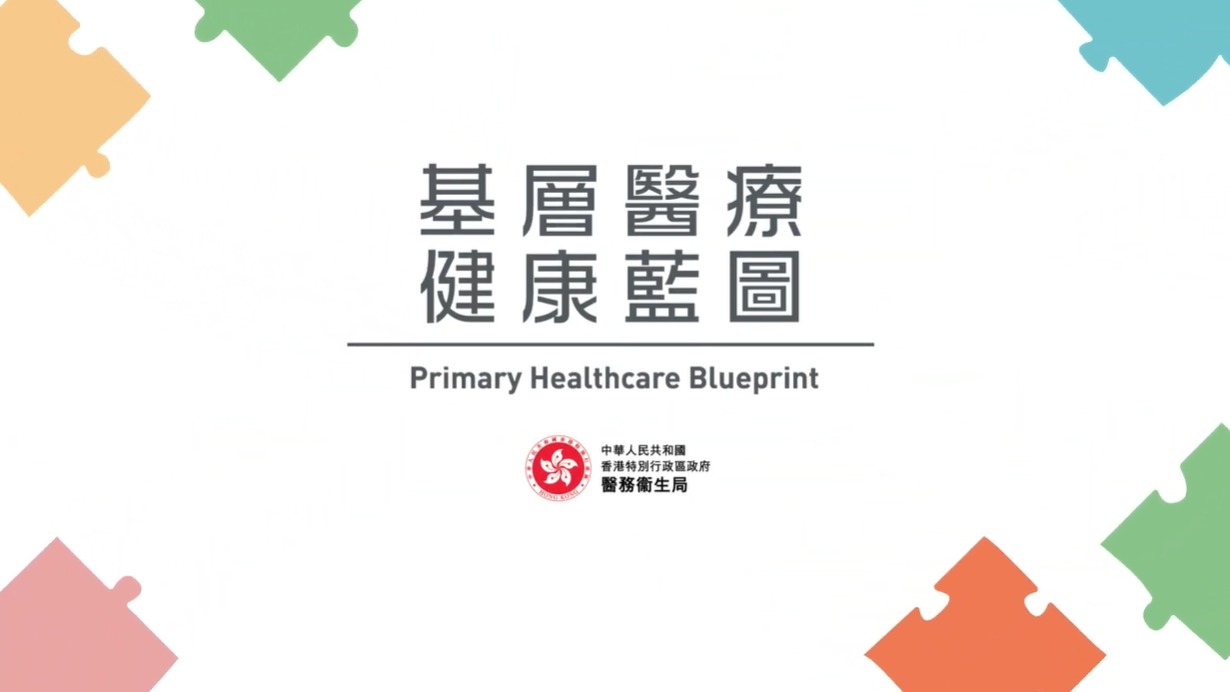


Introduction
Tobacco is highly addictive, so helping smokers to quit is critical to the success of other tobacco control measures. Smoking cessation is beneficial to smokers of any age and brings immediate and long-term health benefits.[1] In spite of the commonly known health risks posed by smoking, studies reveal that over 60% of daily smokers in Hong Kong have never attempted to quit smoking.
Article 14 of the FCTC requires that “each Party shall develop and disseminate appropriate, comprehensive and integrated guidelines based on scientific evidence and best practices, taking into account national circumstances and priorities, and shall take effective measures to promote cessation of tobacco use and adequate treatment for tobacco dependence”.
Due to the high fatality rate of smoking, treatment on removing tobacco dependence is one of the most cost-effective healthcare interventions.[2] There are a wide range of smoking cessation treatment methods that have been proven effective. Despite the majority of smokers quitted without any assistance, studies show that counselling and drug treatment can boost the quit rate substantially, and even the brief advice given by healthcare professionals can help improve the quit rate. To achieve the best result, it is essential to enhance the intervention measures for patients in the healthcare institutions, with a view to enabling every smoker to receive cessation advice every time during their healthcare contacts.
Local situation
Over the years, the Government has been actively promoting the smoking cessation services through mass media campaigns, quit lines, smoking cessation clinics and etc. DH operates an integrated smoking cessation hotline (i.e. Quitline) which provides cessation counselling services, and serves as a referral hub for all smoking cessation services funded by the Government in Hong Kong. Apart from the public clinics under the HA, the DH provides subventions to non-governmental organisations (NGOs) for the provision of a comprehensive package of cessation treatment services, including cessation counselling, drug treatment, acupuncture and support groups in cessation clinics. NGOs have also launched cessation programmes specifically for different ethnic groups and new immigrants. Meanwhile, mobile clinics also provide outreach services, so as to facilitate public access to cessation services. Besides, NGOs are distributing nicotine replacement drugs by post to smokers and providing follow-up counseling services by phone so that they can receive smoking cessation services at home.

To specifically help the young smokers to quit, DH operates a hotline in collaboration with a local university to provide peer phone counselling services tailored for young smokers under the age of 25. The cessation programmes and services adopt various modes of treatment and target different groups of smokers, the success rates of which vary from 20% to 60%, showing a similar level of effectiveness to overseas countries. A series of self-help tools (such as Quit Smoking App and web-based intervention) have also been developed to help smokers quit by themselves.
Statistics show that a combination of drug treatment and counselling can generally achieve a higher cessation rate. By providing nicotine replacement therapy together with counselling, smokers with chronic diseases can receive the most effective cessation support rendered by healthcare professionals who will also keep track of their progress. We hope to increase smokers’ accessibility to effective cessation services by leveraging the primary healthcare network. We also recommend that healthcare institutions should screen the patients’ smoking situation and record it in eHealth’s database to facilitate the offering of smoking cessation advice or referral to cessation services for smokers by healthcare professionals during consultations.

The Government announced the Primary Healthcare Blueprint (the Blueprint) in 2022 which suggests enhancing the delivery of primary healthcare services to address the challenges brought about by an ageing population and the increasing prevalence of chronic diseases, with a view to promoting the overall health and quality of life of citizens. The benefits brought by smoking cessation echo the vision of the Blueprint that stresses the importance of disease prevention rather than curative treatment. Until the end of 2022, all 18 districts have set up a District Health Centre (DHC) or DHC Express, which will serve as an ideal platform for the delivery of smoking cessation support to smokers.
Healthcare professionals are in a key position to motivate smokers to quit. Even very brief advice they give for as short as 30 seconds has been proven effective in increasing the cessation rate.[3][4][5] DH has developed a series of training courses and tools to assist healthcare professionals to offer smoking cessation advice to patients, ranging from very brief advice which takes only 30 seconds to comprehensive cessation treatment. DH also organises regular training courses for healthcare professionals to enhance their capability to render cessation support in the community.
The annual number of people receiving smoking cessation services gradually increased from about 700 in 2009 to over 6,500 in 2016. However, there is a decreasing trend in the number of people receiving such services in recent years, with the number dropping to below 5,000 in certain years. We need to review the existing smoking cessation services and the relevant training provided for healthcare professionals in order to motivate and help more smokers to quit smoking.

The Government proposed in its Primary Healthcare Blueprint (the Blueprint) released earlier on to further develop a community healthcare system based on the model of District Health Centres (DHCs). Healthcare professionals play a vital role in helping smokers to quit smoking. The Primary Healthcare Office of the Health Bureau has all along been organising training courses related to primary healthcare in collaboration with various healthcare training institutions. Including cessation support in the elementary training for healthcare professionals will enable them to acquire the general knowledge on smoking cessation.
The Blueprint proposed to launch the Primary Care Register (PCR), and recommend to require all family doctors and healthcare professionals providing primary healthcare services to be enlisted on the PCR to ensure the quality of primary healthcare services, so as to set the standard for service providers. In the meantime, the Blueprint also proposed strengthening relevant training for all primary healthcare service providers and shall include primary healthcare training requirements as pre-requisites for listing and maintaining in the PCR.



Introduction
Tobacco is highly addictive, so helping smokers to quit is critical to the success of other tobacco control measures. Smoking cessation is beneficial to smokers of any age and brings immediate and long-term health benefits.[1] In spite of the commonly known health risks posed by smoking, studies reveal that over 60% of daily smokers in Hong Kong have never attempted to quit smoking.
Article 14 of the FCTC requires that “each Party shall develop and disseminate appropriate, comprehensive and integrated guidelines based on scientific evidence and best practices, taking into account national circumstances and priorities, and shall take effective measures to promote cessation of tobacco use and adequate treatment for tobacco dependence”.
Due to the high fatality rate of smoking, treatment on removing tobacco dependence is one of the most cost-effective healthcare interventions.[2] There are a wide range of smoking cessation treatment methods that have been proven effective. Despite the majority of smokers quitted without any assistance, studies show that counselling and drug treatment can boost the quit rate substantially, and even the brief advice given by healthcare professionals can help improve the quit rate. To achieve the best result, it is essential to enhance the intervention measures for patients in the healthcare institutions, with a view to enabling every smoker to receive cessation advice every time during their healthcare contacts.
Local situation
Over the years, the Government has been actively promoting the smoking cessation services through mass media campaigns, quit lines, smoking cessation clinics and etc. DH operates an integrated smoking cessation hotline (i.e. Quitline) which provides cessation counselling services, and serves as a referral hub for all smoking cessation services funded by the Government in Hong Kong. Apart from the public clinics under the HA, the DH provides subventions to non-governmental organisations (NGOs) for the provision of a comprehensive package of cessation treatment services, including cessation counselling, drug treatment, acupuncture and support groups in cessation clinics. NGOs have also launched cessation programmes specifically for different ethnic groups and new immigrants. Meanwhile, mobile clinics also provide outreach services, so as to facilitate public access to cessation services. Besides, NGOs are distributing nicotine replacement drugs by post to smokers and providing follow-up counseling services by phone so that they can receive smoking cessation services at home.

To specifically help the young smokers to quit, DH operates a hotline in collaboration with a local university to provide peer phone counselling services tailored for young smokers under the age of 25. The cessation programmes and services adopt various modes of treatment and target different groups of smokers, the success rates of which vary from 20% to 60%, showing a similar level of effectiveness to overseas countries. A series of self-help tools (such as Quit Smoking App and web-based intervention) have also been developed to help smokers quit by themselves.
Statistics show that a combination of drug treatment and counselling can generally achieve a higher cessation rate. By providing nicotine replacement therapy together with counselling, smokers with chronic diseases can receive the most effective cessation support rendered by healthcare professionals who will also keep track of their progress. We hope to increase smokers’ accessibility to effective cessation services by leveraging the primary healthcare network. We also recommend that healthcare institutions should screen the patients’ smoking situation and record it in eHealth’s database to facilitate the offering of smoking cessation advice or referral to cessation services for smokers by healthcare professionals during consultations.

The Government announced the Primary Healthcare Blueprint (the Blueprint) in 2022 which suggests enhancing the delivery of primary healthcare services to address the challenges brought about by an ageing population and the increasing prevalence of chronic diseases, with a view to promoting the overall health and quality of life of citizens. The benefits brought by smoking cessation echo the vision of the Blueprint that stresses the importance of disease prevention rather than curative treatment. Until the end of 2022, all 18 districts have set up a District Health Centre (DHC) or DHC Express, which will serve as an ideal platform for the delivery of smoking cessation support to smokers.
Healthcare professionals are in a key position to motivate smokers to quit. Even very brief advice they give for as short as 30 seconds has been proven effective in increasing the cessation rate.[3][4][5] DH has developed a series of training courses and tools to assist healthcare professionals to offer smoking cessation advice to patients, ranging from very brief advice which takes only 30 seconds to comprehensive cessation treatment. DH also organises regular training courses for healthcare professionals to enhance their capability to render cessation support in the community.
The annual number of people receiving smoking cessation services gradually increased from about 700 in 2009 to over 6,500 in 2016. However, there is a decreasing trend in the number of people receiving such services in recent years, with the number dropping to below 5,000 in certain years. We need to review the existing smoking cessation services and the relevant training provided for healthcare professionals in order to motivate and help more smokers to quit smoking.

The Government proposed in its Primary Healthcare Blueprint (the Blueprint) released earlier on to further develop a community healthcare system based on the model of District Health Centres (DHCs). Healthcare professionals play a vital role in helping smokers to quit smoking. The Primary Healthcare Office of the Health Bureau has all along been organising training courses related to primary healthcare in collaboration with various healthcare training institutions. Including cessation support in the elementary training for healthcare professionals will enable them to acquire the general knowledge on smoking cessation.
The Blueprint proposed to launch the Primary Care Register (PCR), and recommend to require all family doctors and healthcare professionals providing primary healthcare services to be enlisted on the PCR to ensure the quality of primary healthcare services, so as to set the standard for service providers. In the meantime, the Blueprint also proposed strengthening relevant training for all primary healthcare service providers and shall include primary healthcare training requirements as pre-requisites for listing and maintaining in the PCR.



Introduction
Currently, smokers in general can only obtain information on smoking cessation by rather passive means, such as media advertisements or referrals by healthcare professionals. THS Report No. 75 shows that over 20% of the smoking population do not know about any smoking cessation services or methods,[6] and more than 65% of smokers have never tried any specified smoking cessation services or methods, such as the Quitline, smoking cessation clinics, smoking cessation services using acupuncture, mail delivery services of medications and etc. This shows that Hong Kong can indeed provide cessation services to more smokers and further reduce the smoking prevalence.
Meanwhile, the Government has only been projecting the smoking prevalence and a series of data related to smoking with reference to the survey conducted by the Census and Statistics Department every other year, which serves as the only means of collecting information about the smoking situation and trends.
Local situation
The existing legislation of Hong Kong requires that the Quitline and prescribed health warnings are printed on the packaging of tobacco products to remind smokers of the hazards of smoking and prompt them to seek cessation support as soon as possible. Nonetheless, the current channels of cessation support are rather passive, thus the Government and healthcare practitioners cannot deliver personalised smoking cessation and health advice to smokers proactively and directly, and cannot get the information on the smoking habits and tobacco usage patterns of the general public accurately. Hence, we should increase the channels of promoting cessation services to deliver correct health information to smokers effectively.
The Government is aware that most smokers were not asked about their smoking status by the healthcare professionals in their visits. By recording the smoking status through the electronic Health Record (eHR) system, healthcare professionals may offer cessation advice, carry out counselling and provide medications for nicotine replacement therapy. When the patient is using healthcare services by other service providers, the professionals can understand the smoking status through the eHR system and offer cessation advice and treatment when necessary. By collecting the data on smoking of the users in the healthcare system, it shall assist in analysing the impact of tobacco use on public health and provision of healthcare services.
In the meantime, despite the prevailing Smoking (Public Health) Ordinance prohibits any person from selling tobacco products to person under the age of 18, there is not mandatory requirement on the retailers to verify the age of the purchaser in each transaction. Some opined that we shall formulate more personalised and targeted promotion on smoking cessation services with reference to the sex, age, consumption rate and purchasing history of tobacco products, in order to encourage more smokers to quit smoking early. To ensure teenagers have no access to tobacco products, on the basis that personal privacy is respected, retailers should be mandated to verify the age of the purchaser in each transaction of tobacco products.



The Government has been providing teenagers with different types of health education and publicity, which include dramas, interactive workshops, provision of teaching materials for primary and secondary schools, etc. through subventions to NGOs. With efforts over the years, the smoking prevalence of the age group below 25 has reduced to 2.6%. Although the education sector has never ceased to educate students about the hazards of tobacco, in order to strengthen the promotion of health education in schools in the face of the lure of alternative smoking products, there are views that measures could be strengthened to ensure that students are exposed to accurate and up-to-date health information from an early age.
- Doll R, Peto R, Boreham J, Sutherland I. Mortality in relation to smoking: 50 years’ observations on male British doctors. BMJ 2004;328(7455):1519. doi: 10.1136/bmj.38142.554479.AE.
- Cromwell, J et al. “Cost-effectiveness of the clinical practice recommendations in the AHCPR guideline for smoking cessatio Agency for Health Care Policy and Research.” JAMA vol. 278,21 (1997): 1759-66.
- Wu L, He Y, Jiang B, et al. Very brief physician advice and supplemental proactive telephone calls to promote smoking reduction and cessation in Chinese male smokers with no intention to quit: a randomized trial. Addictio 2017;112(11):2032-2040.
- Lin PR, Zhao ZW, Cheng KK, Lam TH. The effect of physician's 30 s smoking cessation intervention for male medical outpatients: a pilot randomized controlled trial. J Public Health (Oxf). 2013;35(3):375-383.
- Cheung YTD, Jiang N, Jiang CQ, et al. Physicians’ very brief (30-sec) intervention for smoking cessation on 13 671 smokers in China: a pragmatic randomized controlled trial. Addictio 2020 Sep 12. doi: 10.1111/add.15262.
- Census and Statistics Department. Thematic Household Survey Report No.75.



